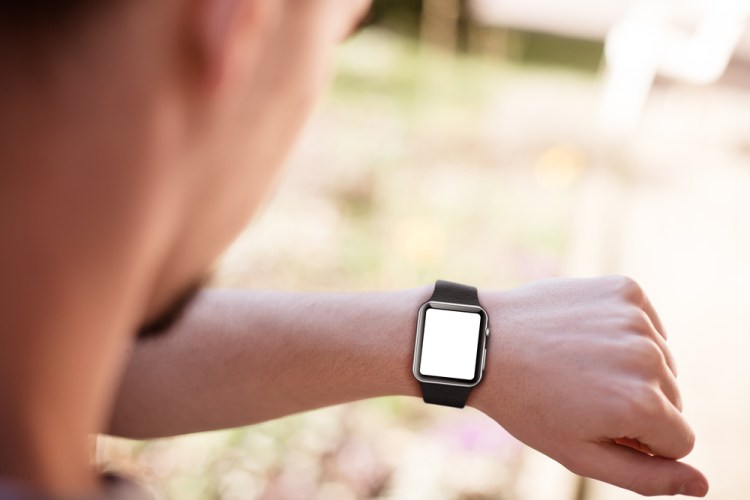Want smarter insights in your inbox? Sign up for our weekly newsletters to get only what matters to enterprise AI, data, and security leaders. Subscribe Now
If the Apple Watch has taught me anything, it’s that all smartwatches are going to require us as product developers, marketers, and publishers to fundamentally reconsider our notion of interruptions and the role they play in how we communicate and engage with consumers.
For far too long, interruptions have formed the currency of digital marketing. Being immersed in the tech industry, I’ve coined the phrase “the Interruption Economy” to describe the incessant stream of disruptions designed to prod us all into action. Newsletters, coupons, promotions, reminders, alerts, spam, and other notifications and communications, which were once easily overlooked in our inboxes or on our phones, are now nuisances when they come from the wrist. This is because, as we transition to wearable devices, it becomes increasingly difficult to separate ourselves from our technology. It’s easy to step away from your desk or set your phone down on a table, but a watch is with you wherever you go.
These interruptions should be thought of as economic in the sense that interruptions are a consumable resource. Each interruption has a cost and a value. When the value doesn’t exceed the cost of the interruption, we end up with dissatisfied and frustrated consumers. This economy has been around for a long time, but as technology changes and devices become increasingly personal, the cost of an interruption is changing rapidly.
Within the first few hours of wearing the Apple Watch, I was inundated with a waterfall of alerts and notifications. It was a stampede of buzzing, dinging, and vibrating on my wrist, and I had no clue what was important and what was not. Marketing emails that I once received and either read or ignored on my schedule became frustrating as they demanded immediate attention by tapping my wrist. The reality began to set in as I scurried back to my smartphone to fine-tune app settings and then back to my laptop to finally unsubscribe. With a sense of urgency, I began blocking a decade’s worth of unwanted noise. In one morning, I took myself off hundreds of lists, cutting out countless marketers who’d spent several years and far too many marketing dollars to vie for my attention.
For marketers, it’s a sink or swim moment. Can you turn this powerful new channel into a win for the consumer, or will you be yet another unsubscribe casualty in the Interruption Economy?
Here are the types of interruptions that will prevail:
- Give me less talk and more action. Who cares if you are having a sale if I can’t buy it on my wrist? I’ve noticed most brands are teasing me with a sale on the watch, but I have to go to my phone or browser to buy. That is neither helpful nor valuable and, in most cases, you lose me. Successful marketers need to decide how to make the interruptions personal and actionable. The interruption needs to relate to me and offer a simple resolution. “Tap here to buy.” Now you’ve got my attention and, chances are, I’ll tap. Steve Krug always says, “Don’t make me think.” These fundamental user experience principals will separate the good from the great in this new Interruption Economy.
- Make it personal. A firehose of communications on your wrist is annoying. Want a great example of an app doing it right? Download Dark Sky, the weather app that can be easily customized to what you want to know about the weather. If you’re a regular on the red-eye from Boston to San Fran, you can set the app to alert you when storms in the Midwest are going to delay your flight. Get to know me. Give me information that is helpful, and I will see you as valuable. Think through how to make your products and marketing more personal and useful.
- Use data to make me smarter. Think on behalf of the people using your products. When you think about what your users want and need, it offers the greatest value. For example, the Bump pregnancy app feeds busy expecting moms and dads with personalized content right to the wrist, including notifications for appointments with suggested to-do’s to help keep them — and baby — on track. My company’s app, Lose It, which is designed to help people live healthier lives, knows that Friday happy hours pose the greatest risk to a week’s worth of healthy living and gives members actionable suggestions for avoiding pitfalls when they walk through the bar’s front door. And an app called Slopes gives skiiers detailed speed, altitude, and distance stats right on their wrist (no one wants to be holding an iPhone while they are speeding down a mountain) and has a Glance view to help you figure out how much time you’ve spent skiing compared to riding lifts.
Until now. consumers have tolerated the “more is more” approach to communicating. But the Apple Watch and the new world of wearables are changing the game. Interruptions are critical currency in the world of marketing and communications, and it’s how you prioritize, personalize, and make those interruptions actionable that will define your company’s value.
Charles Teague is cofounder and CEO of weight loss app Lose It.


